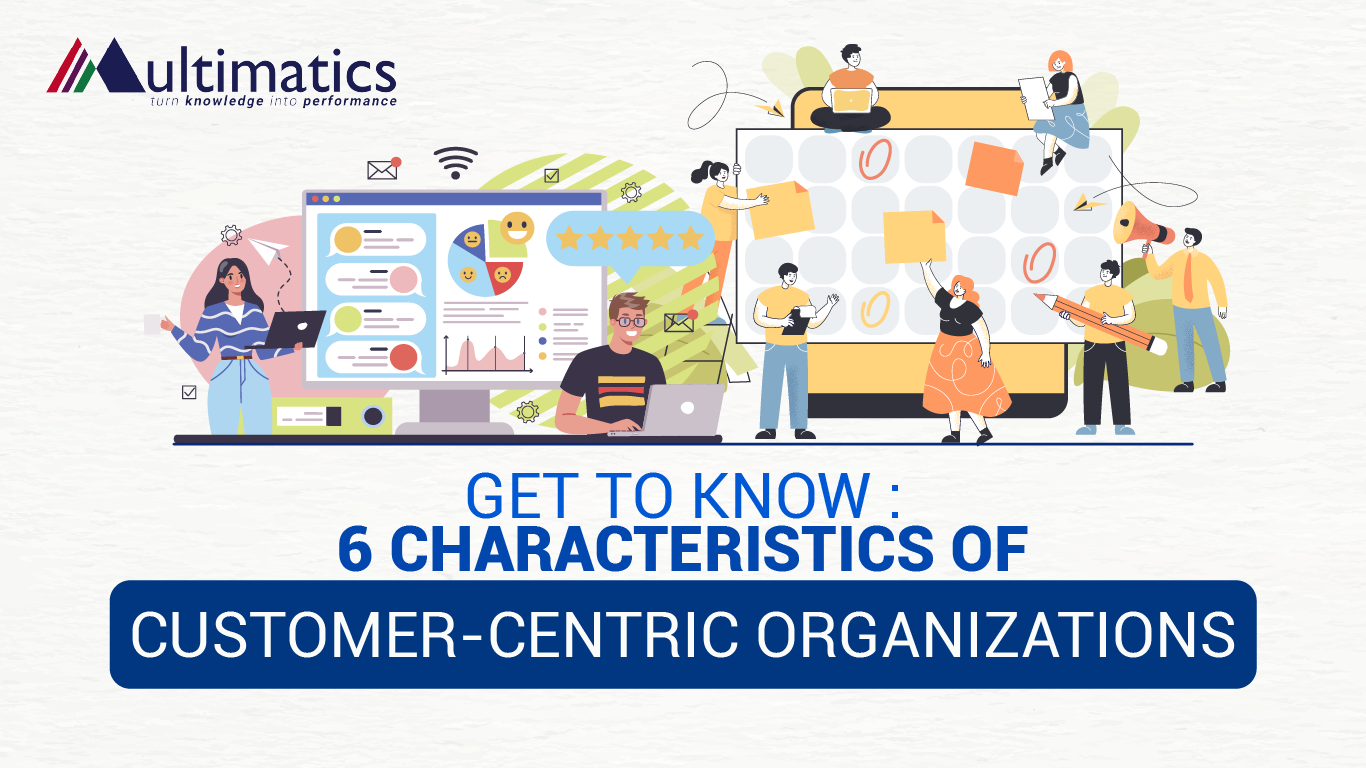

PhD candidate and result-oriented Director with 25 years experience with involvement in all levels of Business Strategy, Sales and Marketing, Managing Project and Product Development. Aside of managing a company, he is also the best corporate trainer and public speaker in seminar and conference.
Get to Know: 6 Characteristics of Customer-centric Organizations
Being highly productive and innovative when delivering our product or services is important. We need to periodically evaluate our performances and create continual improvements to our products and services. What’s more important is ensuring that our products or service can bring value to our customers.
When organizations commit to customers’ success, they will be able to deliver solution-based products in which support them to gain loyal customers and brand advocacy. This is why becoming a customer centric organization is the key driver to build organizations’ competitive edge and generate more customers. Customer-centric marketing strategy focusing in customer and market orientation, which takes customer preferences into accoun in value creation. This shows that both customer and market knowledge become critical in developing better marketing strategy, because they also enable organizations to make better decision for the standardization or adaptaion of global business model.
How to know if your organization is customer centric? Here are the 6 characteristics of Customer-centric organizations!
1. Know Your Customer
Before developing its products or services, organizations need to start focusing on their customers’ demands and pain points. Organizations need to start with their customers and not their products. They should stay focused on the customer changing needs and market conditions. Gaining customers’ preferences and pain points will support organizations in developing products or services acting as the problem-solving device.
2. Build a Customer Centric Culture
When relevant teams in product or service development can obtain a customer-centric mindset, this approach should also be used to all employees in the organization as a crucial part of the its culture. In doing so, all operations and processes encompass in a customer-centric culture. This enables organizations to carefully develop framework or operating system that align with the customers’ needs.
3. Create Informed Decisions
Utilize actual and accurate data to create effective market research, decision-making, and measure organization’s performance. Organizations also can have actual insights of their costumers’ sentiment on their products or services. These insights will help organizations not only to offer effective solutions but also cover greater possibilities for effective workflow.
4. Engage with Your Customer
Conduct customer engagement strategies to gain better understanding of the customers’ needs, wants, and pain points that could be used to fit products or services offered to the market. In addition, personalized approach also can be used to understand customers’ perspective better about the organization’s products or services.
5. Find solutions for their problems
Provide customers with products or services that solve their problems, and even exceeds the customers’ expectations. Become a solution-based organization that covers customers’ problems or pain points to gain their loyalty.
6. Stay innovative
Aligning with customer needs means continual innovations through changing demands for better service. As business develops, more problems can be solved with more solutions. Capabilities, such as skills, knowledge and experience are important to initiate and implement innovations. Innovation capabilities enable organizations to utilize internal resources effectively by integrating them to complement market’s changes and demands.
Again, a customer-centric culture is the key driver to gain competitive advantages and continual improvements. When developing products or services, organization should not only focusing on benefits that can be obtained, but more on the the solution they can give to their customers. Organizations need to utilize customer information by developing products and services that satisfy customer needs. Business leaders should also understand that to achieve high growth via customer-centric strategies and organization’ innovativeness, organization require extra resources such as sufficient human resources and knowledge that enable organizations to find a balance that helps them achieve growth in ever-changing business environments.
Reference:
Hashim, Nik Mohd Hazrul Nik; Yap Hock Ann, Amin Ansary & John Antony Xavier. (2020). Contingent Effects of Decision-making and Customer Centricity on Public-Sector Innovation Success, Journal of Nonprofit & Public Sector Marketing, DOI: 10.1080/10495142.2020.1761000
Tuominen, Sasu. Helen Reijonen. (2022). Customer-centric strategy driving innovativeness and business growth in international markets. Business growth in international markets. https://www.emerald.com/insight/0265-1335.htm
Zhou, Z. and Nakata, C. (2007). Re-examining the link between customer orientation and business performance: the role of information systems. Journal of Marketing Theory and Practice, Vol. 15 No. 3.
Ellonen, H. K., Jantunen, A., & Kuivalainen, O. (2011). The role of dynamic capabilities in developing innovation-related capabilities. International Journal of Innovation Management, 15(3), 459–478. https://doi.org/10.1142/S1363919611003246